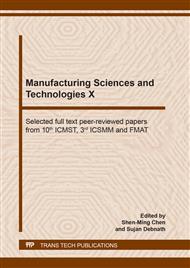p.59
p.65
p.70
p.77
p.85
p.91
p.97
p.103
p.111
A Comparison on Column Reinforcement with Conventional Concrete and Carbon Fiber / Epoxy Exposed to Compression Loading
Abstract:
There are lots of concrete columns and beams around in our living cities. Those items are mostly open to aggressively environmental conditions. Mostly, they are deteriorated by sand wind, humidity and other external applications. After a while these beam and columns need to be repaired. Within the scope of this study, for reinforcement of concrete columns, samples were designed and fabricated to be strengthened with carbon fiber reinforced composite materials and conventional concrete encapsulation and followed by, they were put into the axial compression test to determine load carrying performance before column failure. In the first stage of this study, concrete column design and mold designs were completed for a certain load carrying capacity. Later, the columns were exposed to environmental deterioration in order to reduce load carrying capacity. To reinforce these damaged columns, two methods were applied, the one “concrete encapsulation” and the other one “wrapping with carbon fiber /epoxy” material. In the second stage of the study, the reinforced columns were applied to axial compression test and the results obtained were analyzed. Cost and load carrying performance comparisons were made and it is found that even though carbon fiber/epoxy reinforced method is more expensive, this method enhances higher load carrying capacity and reduces reinforcement processing period.
Info:
Periodical:
Pages:
85-90
Citation:
Online since:
June 2020
Authors:
Keywords:
Price:
Сopyright:
© 2020 Trans Tech Publications Ltd. All Rights Reserved
Share:
Citation:


